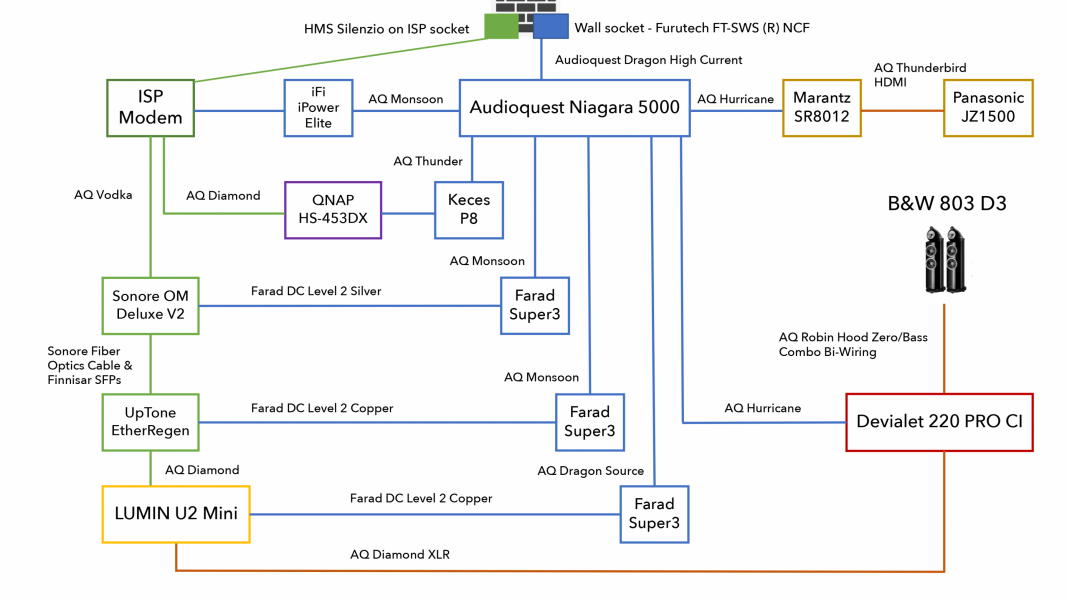A power supply exists to meet demands the electronics places on it. It can only meet those demands if it is able to draw current from the AC circuit instantaneously to meet those demands. The less the power cord resists the flow of current, the better the power supply is able to perform.
I read that all the time, but I know when I have gear that demands a super high current, the breaker trips instantaneously.
And if the cord is not getting hot then I doubt that the current is getting out of hand for he cord... Plus it is already pulsing in at 100-120 Hz… it is not like the 120v is a constant number.
The power supply exists to supply DC power from AC, and then to store the DC power do it can bursted out as needed.
half the time the AC not able to shove any current into the system.
Furthermore “this power supply” is supplying power to something with its own internal storage most of the time.
Whatever is taking in 12V and 3-5A is not going to be pulling a greatly demand on the electrical grid. It is going to be a DAC or preamp, or some similar thing that does not need the stiffness of all the Hoover dam power.
Like I said earlier, without some graph, like these:
<phots and text removed>.
MEASUREMENTS
Farad Super3
View attachment 61097View attachment 61098
View attachment 61099
View attachment 61100
Voltage loaded: 11.8
Voltage unloaded: 12.14
Noise max: -122 (55 KHz)
Noise min: -145
Sjonge… (WOW!) how good the Farad Super3 measures! There is actually no noise at all. So this is going to be a very boring story. We see nothing at all on the AudioPrecision: a stable noise level of around -140 dBV to around 1 kHz. From 1 kHz we see that it rises slightly towards the 50 kHz. But yes: around -130 to -125 dBV, so what are we talking about?
The square wave also comes through nicely, although it seems to be slightly muted. Perhaps the result of a coil or the supercaps ...
LISTENING
Rest, rest, rest ... The Farad is a special product. It lifts the Mytek one level above that of the Sbooster. We hear more black, more music. Purely because of the silence it can bring. The voice of Beth Gibbons is completely loose (intended positively) and has received a beautiful natural timbre. No hardness. The edges around the high hats are also completely gone. The dac is also no longer close to busier, more complex work. Very special to hear this. If you think it can't be better ... It can be done. Absolutely a top product.
… Then I am pretty skeptical.
I suppose I used one of those conditioners that did not work as well, then maybe busting power cords and fuses makes sense.
But if the device works as it was shown, then what is a power cord going to do?
(It is already operating scary-perfect)
I also took a couple of physics courses, so I am familiar with what is happening.
I did less well in the creative writing courses, so the reviews of power cords don’t resonance with me as well.
On one of my amps I can turn the thing off and it plays for ~10 seconds.
But I do not think that these Farad devices are being used for large loads, just the 12V, and similar, stuff.
However when an amp runs with switched off power, it sort of indicates a lot of energy storage.













